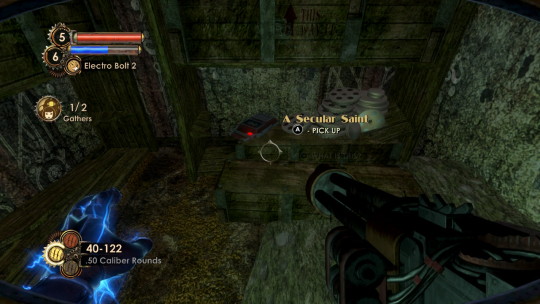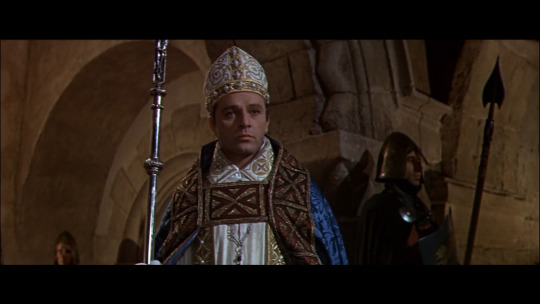#secular saints
Explore tagged Tumblr posts
Text
Deities, Figures, And Spirits of Rebellion, Revolutions, and Resistance.

While Tensions are High and emotions flood the body and mind, I like to think back to time and how history has birthed incredible and magnificent people throughout its unforgiving march forwards. And I think of those figures and people or those gods and stories, and I remind myself of their presence and how they shook the time and the eras that they occupied. I’m in love with them. And I admire them. Whether they are trickster Spirits that stand against Authority and embrace strength against adversity or fighting against authority and resisting the status quo, I often admire and think of them. I think of them fondly and I nod to them through Space and Time, and by thinking of them, I carry them in my heart. And I am motivated by their Light and the Inspiration that they have brought across the ages. I know that they are *there*. Eons apart from me or in spaces and spirit that I cannot grasp anywhere but within my very spirit. They are there. And I am holding them in my spirit and heart and they are holding me. And I move with their spirit and their awareness. And I nod to them. And they, to me. I wanted to provide a large list of Figures, Saints, Gods or other individuals and Beings commonly venerated, worked with or worshiped as icons of resistance and overcoming trying times. History is steeped in trials and circumstances where the oppressed and hunted have overcome great adversity or stood against the tides that seek to bring harm unto them. Here, I will list figures that you can draw upon or look to in your hours of need. If you seek a Revolutionary, you may find one Here. (feel welcome to add some as this crosses your path!)
Some Saints:
St. Michael the Archangel – Known as the chief warrior angel, St. Michael is often invoked for protection and strength in battles and against evil.
St. Joan of Arc – The French saint who led her country in battles against English forces during the Hundred Years' War. She’s celebrated for her courage and conviction against overwhelming odds.
St. Jude Thaddeus – Known as the patron saint of lost causes, people turn to him in desperate situations for help in overcoming challenges that seem impossible.
St. Sebastian – Often depicted as a martyr who survived multiple executions, he became a symbol of strength, resilience, and steadfastness in the face of persecution.
St. George – Known for slaying a dragon, St. George is a symbol of overcoming evil and oppression. Often associated with courage in adversity.

Deities:
Sekhmet (Egyptian Mythology) – The lion-headed goddess of war and healing, Sekhmet is revered for her fierce power and for defending the oppressed.
Morrigan (Celtic Mythology) – The Celtic goddess of battle and sovereignty, Morrigan embodies both the power to protect and to incite change. She is often seen as a guardian of the land, appearing before battles to inspire or instill fear in the enemy.
Kali (Hinduism) – Goddess of destruction and rebirth, Kali represents the destruction of evil and is often invoked for overcoming difficult circumstances and for protection against oppressive forces.
Oya (Yoruba/Orisha Tradition) – Goddess of winds, storms, and transformation, Oya is a fierce warrior who stands up against oppression and is often turned to for protection and resilience. Ogun (Yoruba/Orisha Tradition) – The god of iron, war, and labor, Ogun is a force for justice and is often invoked in situations requiring resilience and the strength to overcome oppression. He’s seen as a revolutionary spirit for those seeking to break free from their constraints. Eshu (Yoruba/Orisha Tradition) – Known as the divine messenger and trickster, Eshu brings both disruption and opportunity. As a god of crossroads, he’s associated with challenging authority and initiating change, reminding followers that revolution often begins with unexpected choices. Yemaya (Yoruba/Orisha Tradition) – The mother of all life and goddess of the sea, Yemaya is often associated with resilience, protection, and the healing of generational trauma. As a nurturing and revolutionary spirit, she is frequently invoked for personal and collective strength. Queen Nanny of the Maroons (Jamaican Folklore) – A legendary figure and spirit in Afro-Caribbean culture, Queen Nanny was a leader of the Maroons who resisted British colonial forces. She’s honored as a warrior and symbol of independence and strength.
Huitzilopochtli (Aztec Mythology) – The god of war and the sun, Huitzilopochtli led the Aztecs through harsh conditions to establish their empire. He symbolizes endurance, perseverance, and overcoming obstacles.
Inanna/Ishtar (Mesopotamian Mythology) – Goddess of love, war, and justice, she descends into the underworld and returns, representing survival through dark times and resistance against forces of oppression.
Manjushri (मञ्जुश्री) (Buddhist Bodhisattva) - Manjushri is venerated across the Buddhist world as an embodiment of wisdom, with devotees seeking his guidance to develop the courage and insight necessary to face personal and societal challenges. Manjushri holds a flaming sword that symbolizes the cutting of ignorance and illusion, a powerful symbol of spiritual revolution and awakening. He represents the transformative power of wisdom and the courage to overcome ignorance, delusion, and societal conventions, which align with themes of inner revolution.
Susanoo (建速須佐之男命) (Japanese Shinto) – The god of storms and the sea, Susanoo is known for his rebellious nature against the heavenly order, and he’s often venerated for his unyielding spirit. He’s remembered for protecting people by slaying a great serpent, representing courage and the ability to challenge authority.
Amaterasu (天照大御神 / 天照大神) (Japanese Shinto) – Though primarily known as the goddess of the sun and order, Amaterasu withdrew from the world when her brother acted destructively, only returning when lured back by others. Her story reflects the themes of resilience and the power to restore light and hope.
Guan Yu (关羽) (Chinese) – A legendary general deified as a god of war and protection, Guan Yu is known for his loyalty, bravery, and sense of justice. He’s widely worshipped as a guardian figure who defends the oppressed and inspires people to uphold righteousness and loyalty.
Nezha (哪吒) (Chinese) – A child warrior deity known for his rebellious spirit, Nezha is celebrated for resisting oppression, particularly against tyrannical figures in the heavens. He represents youth, resilience, and defiance against unjust authority, often empowering those who feel marginalized or oppressed.
Xiwangmu (西王母) (Chinese) – Also known as the Queen Mother of the West, Xiwangmu is a powerful goddess associated with healing, protection, and transformation. While not a revolutionary in the typical sense, she embodies resilience, independence, and the power of women in a traditionally male-dominated pantheon.
Zhong Kui (钟馗) (Chinese) – Known as the demon slayer, Zhong Kui is a spirit of justice who fights against evil spirits and brings protection to those who feel haunted by oppression. He is venerated as a deity who can help people overcome fears and defeat obstacles that seem insurmountable.
The Eight Immortals (八仙) (Chinese) – A group of legendary Taoist figures, each with unique powers, who often challenged the social order. Figures like Lü Dongbin and Zhang Guolao used their abilities to help people and protect them from corrupt rulers and evil forces, embodying the spirit of defiance against oppressive systems.
Sun Wukong (孙悟空) (Chinese) - The central figure in the 16th century novel “Journey to the West (西游记) but also a figure in Mythology, Sun Wukong stands against authority and inspires both resistance and strength as well as dynamic growth.

Demons:
Lord Lucifer - The Adversary and Illuminator. Lucifer is a longstanding figure of bearing the light in the darkness and fighting against overwhelming oppression and control of powers that deem themselves tyrants. Lucifer fights and battles against forces that subjugate the oppressed.
Lord Asmodeus – Known in demonology as a figure representing strength, ambition, and power, Asmodeus is sometimes invoked for resilience, drive, and confidence to overcome personal and external challenges.
King Belial – Often associated with independence and personal power, Belial is sometimes venerated for helping people stand strong in their own beliefs and against unjust authorities.
Mother Lilith – A figure of independence and resistance, Lilith is revered in some traditions as a symbol of feminine power and autonomy, especially in standing against oppression and patriarchal structures.
Lord Buer – Demon of healing and knowledge, called upon for mental strength and overcoming illness or hardship through wisdom and resilience. Promotes mental health and healing as well as encourages growth through overcoming your mental blockages.
Lord Leviathan - The Lord of Shadow Working. Lord Leviathan helps you navigate the deep and dark waters of your mind where you may feel overwhelmed and drowning. Lord Leviathan can bring you clear waters and help support you when the tides feel like they may pull you down.

Secular Saints & Venerated Figures, Other Folkloric figures and Revolutionaries:
Harriet Tubman – Though not formally canonized, Harriet Tubman is often seen as a symbol of liberation and resilience, escaping slavery and leading others to freedom.
Malcolm X – An icon of strength, self-determination, and resistance, especially in the context of racial oppression. His life inspires resilience and the fight for justice.
Hypatia of Alexandria – Known for her wisdom and intellectual resilience, Hypatia became a symbol of strength and survival in a time when powerful figures often sought to silence knowledge.
Nelson Mandela – Revered globally for his resilience and role in overcoming apartheid, Mandela is a secular saint for many, representing strength and the spirit of resistance.
Frida Kahlo – Known for her resilience through physical and emotional pain, Kahlo’s life and work are often venerated as symbols of strength, personal power, and survival against all odds. Cuauhtémoc (Aztec/Mexica Tradition) – The last Aztec emperor who resisted the Spanish conquistadors. He is remembered as a hero who fought courageously to protect his people, embodying resilience and the spirit of resistance in Mexican culture.
Emiliano Zapata (Mexican Folk Hero) – Though not a deity, Zapata’s revolutionary spirit against oppressive forces has made him almost a legendary figure in Mexican folklore. He’s revered as a folk saint and a symbol of the fight for social justice and indigenous rights.
Hua Mulan (Chinese Folklore) – Celebrated for her bravery and willingness to challenge gender norms, Mulan fought in her father’s place in the army. Her story is a symbol of courage, resilience, and overcoming social constraints.
Kumari (Nepalese Tradition) – Known as the living goddess of Nepal, the Kumari is believed to embody divine power and protection for the people. She serves as a symbol of resilience and cultural endurance in the face of modernization and outside influence.
Zumbi dos Palmares (Afro-Brazilian Tradition) – A leader of a community of escaped slaves (Quilombo dos Palmares) in Brazil, Zumbi is honored as a hero and symbol of freedom, resistance, and African heritage in Brazil.
Yue Fei (岳飞) – A historical general from the Song Dynasty who became a symbol of loyalty, patriotism, and resistance against foreign invaders. Despite betrayal and wrongful execution, Yue Fei is venerated as a hero who embodies loyalty to one’s people and the fight against oppression.
Li Shimin (Emperor Taizong of Tang, 唐太宗 李世民) – Known for his role in overthrowing the corrupt Sui Dynasty, Li Shimin played a crucial role in establishing the Tang Dynasty. He is respected as a revolutionary leader who brought stability and cultural prosperity to China.
Chen Sheng and Wu Guang (陈胜, 吴广) – These two commoners led one of the first rebellions against the Qin Dynasty’s harsh rule, sparking what would eventually become a larger revolt. They are remembered as symbols of the common people’s resistance against an oppressive regime.
The White Lotus Goddess (白莲教) – Associated with the White Lotus Society, this goddess represents spiritual resistance against corruption and oppression. The White Lotus sect played a significant role in several uprisings throughout Chinese history, including revolts against the Mongol Yuan Dynasty.
Chi You (蚩尤) – A figure from ancient mythology, Chi You was a tribal leader who fought against the Yellow Emperor. He is often depicted as a warlike figure who stood against established order. Though he was ultimately defeated, he became a symbol of rebellion and bravery in later cultural narratives.
Lü Zu (吕祖) – One of the Eight Immortals, Lü Dongbin (or Lü Zu) was known for challenging both heaven and earth, and he often sided with the poor and downtrodden. He encouraged people to resist worldly corruption, especially among the rich and powerful, inspiring resilience and self-cultivation.
Madame Zheng Yi Sao (郑一嫂) – Often called the Pirate Queen, she was one of the most powerful pirate leaders in history and led a massive fleet that defied the Chinese imperial government. Madame Zheng embodies resistance against oppressive authorities and is celebrated for her intelligence and revolutionary spirit.
#witchcraft#witchblr#devotional post#gods and deities#deity work#revolution#saints#secular saints#gods#goddesses#paganism#folklore#god worship#polytheism#deity worship#paganblr#current events#demons#demonic workings#demonolatry#chinese mythology#polytheist#shintoism#saint veneration
61 notes
·
View notes
Text
me when people refer to laura lee as catholic

#guys please she is not catholic she is so clearly protestant i will scream#people just default to catholic when they see christian for some reason#and it drives me INSANE with laura lee in particular because she’s so clearly Not!!!#i think the only thing she does that could possibly link her to catholicism is cross herself Once#which some protestants also do!!#she never prays the rosary she wears a cross instead of a crucifix she never talks about mary or a patron saint or anything GUYS#i know this happens because most of the fandom is secular and therefore doesn’t know much about the differences btwn catholics & protestants#but still. please. if ur gonna be talking abt a christian character do your research instead of saying things you don’t actually know#it drives me so bonkers#laura lee#yellowjackets#laura lee yellowjackets#yellowjackets laura lee#yj
70 notes
·
View notes
Text

cool guy having a chill day 🐤
120 notes
·
View notes
Text

The genius of Sofia Lamb is a thing of empathy, a profound moral sense; I can only describe her… as a kind of… of secular saint. But dividing her loyalty evenly across the world at large spreads it so thin as to be invisible to some. Love… I have found, is… beneath her. Naturally, Ryan arrested her… gave her to Sinclair to incarcerate somewhere. But upon her escape, she took the city… and changed my life forever.
#a secular saint#gil alexander#sofia lamb#dr lamb#dr sofia lamb#doctor lamb#doctor sofia lamb#the rapture family#rapture family#andrew ryan#love#arrested#secular saint#sinclair#augustus sinclair#escape#take the city#changed my life#audio diary#audio diaries#bioshock 2 audio diary#bioshock 2 audio diaries#big daddy#subject delta#dionysus park#rapture#triton cinema#cinema#triton#theater
4 notes
·
View notes
Text



Missed my old MCD OC Diane ft our fav emo goth priest man, Zane. God I'm trying to flesh out the Church within MCD and it's been SO difficult aaaaaaaaaaughghghghghg x-x Anyways, playing around with how church officials look within the Church of Irene, specifically important members of the Church. Diane is one of Zane's apprentices who's going around the land, spreading Irene's doctrine and trying to get villages to join O'Khasis.
#art sneeze#aphblr#minecraft diaries#mcd oc#zane ro’meave#mcd zane#anyways fun fact: I had Diane since 2015 lol#yall remember Saint Iridia???#yeah i promise she'll be the next post about my MCD au story I prommyyyyy#its been so goddamn long oh my god#seriously i think the church of irene needed to be fleshed out#since in the series proper: is the lord system secular???#is it a theocratic system that uses the church to legitimate the rule???#the church is said to be deeply influencial a la zane but like.#doesnt have any real prominence outside of zane#seriously its so vague RAUGGHGHGHGHGHGHG#i need to do a huge world building dump </3
13 notes
·
View notes
Text
@scarvenartist has given me an excuse to share the latest bit of William Seward trivia that I'm overly amused by.
At Lincoln's last Cabinet meeting, the morning of the day he died, they discussed potential plans for Reconstruction. Seward wasn't able to be there, of course, what with all the recovering-from-a-broken-jaw, but he sent his son Fred in his place.
Fred read out his father's list of plans for Reconstruction, explaining that Seward had whispered this to him from his sickbed.
When he finished, Lincoln was like, "That's a long list for a man who can barely talk."
It just amuses me to think that this guy talked so much and was such a workaholic that even a broken jaw couldn't keep him quiet during Cabinet meetings.
#history is awesome#presidential talk#i needed to make sure you'd get at least one post on your dashboard about the right seward#incidentally i associate him with you now which is a big reason for my continued interest in him#also he was a very helpful figure to keep in mind during the later parts of that lincoln book#where they talk about lincoln's legacy#and it gets over-the-top in presenting him as a secular saint#i'd just remember he hung out with seward and that would always bring the image back to earth#yeah lincoln was a good guy but he was also just a guy#working in a government with other politicians#and seward is very much a politician so the association helped to keep lincoln at a human level
34 notes
·
View notes
Text
idk if this is weird or if it will resonate with anyone else, but sometimes I feel kinda robbed having been raised protestant. like if I was going to have all this residual guilt and shame and end up atheist anyway could I at least have had beauty. stained glass or old-ass choral music or just anything at all to give a sense of majesty about Creation
#we were presbyterian#and an especially chilly and anemic version of presbyterianism at that#the church i grew up in specifically split from the national Presbyterian church#when the latter started officially allowing same sex marriage and ‘my’ church didn’t like that decision 🙃#we remained seated when we sang our ‘contemporary’ (read: produced in the 80s) worship music#loveless lifeless place on the whole#also the lack of saints and deemphasis of angels and the workings of heaven and the fantastical in general in protestantism like-#pretending at the sensibility and rationality of secularism doesn’t improve religion#it just kind of bleeds it of color or anything to sink one’s teeth into emotionally or imaginatively#I was such an emotional kid I wonder what my spiritual experience would have been#if there had been anything at all there for me to grab onto#random#text post#personal
8 notes
·
View notes
Text

@boleynism replied to your post:
It's a great summary, although I'm not sure 'bullying' is the best word choice (...hectoring?); unless, of course we're taking Chapuys at 100% face value (which...off the dome, incorrect report of the name of Anne's first child, incorrect report that Mary was going to be sent to serve Anne as maid in waiting, report that there were no bonfires celebrating Elizabeth's christening was contradicted by two other sources...only the first of which he ever admitted the error, which he would never have gotten away with doing otherwise, as she was a significant child, the second of which he still claimed was true but that Anne had changed her mind and decided to send her to Elizabeth's household instead). And it's the reality of power, really...gaining power, securing power, maintaining power (or, as Thomas has argued here, safety) can be very ugly. These were not Disney princesses we're talking about. But there's a certain Janus face to all this, also: in all likelihood, Anne completely believed that everything she did was justified, because she wanted to use that power for good ("pardon me from your hearts [...] that I have not done all the good that was in my power to do.” ), for causes she believed in, that's all tied up in that fierce maternal instinct (""A mother's love for her child is like nothing else in the world. It knows no law, no pity, it dares all things and crushes down remorselessly all that stands in its path.") as well.
#tbf...the second was not a crazy prediction. it just happened to be true of margaret douglas; but not mary#boleynism#replies#mackay argues if he found any of those reports to be incorrect he would've admitted it#but...he had a vested interest in not doing so#and that he never offers any update to the report in question merits it...questionable; imo#again like all the reports he corrects; he would never have been able to get away with NOT correcting#elizabeth's name. elizabeth is to be declared 'the daughter of norris' . etc#i feel like there is a sort of reverse corroboration here insofar as...#idk. the suggestion that mary would never have held that intense a grudge if his reports on this matter were not all 100% true#which is like...more than a little facetious#anne could have been a saint (she wasn't) in every other respect and mary's hatred of her would still be entirely understandable#as the woman that is the cause of her mother's abandonment and exile and her own#as she would have seen it.#*saint as in the secular colloquialism of the word. lol#(also it's not a prediction or if it is he doesn't admit it is lol. it's a report that that is decisively what's happening#that proves false. so)#all that would have been enough. all thomas summarized there. the separation of mary from her mother etc#mary is separated from her mother and never sees her again. she dies before she can. of course she would hate anne boleyn#it happened when she was judged to still be at the height of her influence with her father. she might've blamed her father too .#but it really is also the timing. it is what is most comforting to believe. which is that an evil woman prevented it and that god then#paid her out.#god doesn't pay her father out. he has a son. just by somebody else.
3 notes
·
View notes
Text


THE DESCRIPTION OF SAINT THOMAS BECKET Feast Day: December 29
"Wait the end with joy. It is the end which characterizes everything and which tests a man's expectations."
Pictured above is from the 1964 film starring the late Richard Burton.
Born in London in 1118, Thomas was of Norman stock. He was initiated into an ecclesiastical career at a young age. Trained in the abbey of Merton, he later studied in France and at the University of Bologna and soon distinguished himself for his intellectual qualities. In 1154 he became archdeacon of the diocese of Canterbury and the following year, the new king of England, Henry II, appointed him chancellor of the realm. Thomas was the king's most trusted man. He lived a comfortable life, and did not disdain the symbols and privileges of power. However, the future Saint did not fail in generosity towards the poor, and showed an inner freedom even in the face of the sovereign, to whom he was not only a counselor, but also a trusted friend.
The turning point in the life of Thomas Becket took place in 1161 when he accepted election as Archbishop of Canterbury. That appointment was strongly advocated by King Henry, who would never have thought of finding a proud adversary in the man, who was once his closest collaborator. Thomas, however, was from then, on, a servant first of a man far greater than the king of an earthly state. The contrast intensified when Henry II sought to limit the freedom and independence of the Catholic Church in England, through the Clarendon Constitutions.
The king asked Thomas to sign the Charter to limit the prerogatives of the Church, but found an insurmountable bulwark in the new Archbishop of Canterbury. Thomas refused decisively: 'In the name of God Almighty, I will not put my seal.' The old friend thus becomes, in the eyes of the king, a bitter enemy.
Thomas would know the bitterness of exile: after a trial, he fled to France and was first the guest of a Cistercian monastery in Pontigny, for two years. He would spend six years away from his homeland, all told. When he returned to Canterbury he met the joyful reception of the faithful, but an even deeper aversion from the Crown.
It is said that one day Henry II exclaimed in exasperation, words to the effect of, 'Will no one rid me of this turbulent priest!' - an exhortation taken literally by four knights who left London for Canterbury.
Thomas Becket was barbarously killed by stabbing inside his Cathedral. It was December 29, 1170.
It is said that the question of the murderers: 'Where is Thomas the traitor?' was answered with: 'I am here, though I am not a traitor, but a bishop and priest of God.'
The commotion aroused by this killing was immense, reaching far beyond the borders of England, so much so that only three years later, on 21 February 1173, Pope Alexander III recognized his martyrdom, elevating him to the honor of the altars.
Source: Vatican News
#random stuff#catholic#catholic saints#thomas becket#tomas becket#england#secular clergy#exeter college#becket (1964)
4 notes
·
View notes
Text
Sadly, being a sadistic little fucker for clicks and pennies is a job for life and a well respected one. They will close ranks and launder and rely on you not knowing off-hand who exactly said what in 5 years time.
we cannot let the people saying "legal child-killing" rejoin society without repercussions. this is depraved. i don't want to share a society with you people. the idea of it repulses me. you people deserve nothing less than ostracization and the end of your platforms and careers.
12K notes
·
View notes
Text
i’ve spent so long working on this illustration of the changeling in its room feeling like something was somehow Wrong with it but not able to put my finger on what it was, and i just now realized it’s bc the changeling doesn’t like any of the non-saint-related religious iconography. gotta get all the crosses off the wall it Doesn’t Care about that.
#N posts stuff#i like you too#i put them up in the first place bc it seemed like a natural association#changeling apparently vehemently disagrees#crosses are a thing some saints hold in paintings and other than that it couldn’t give a shit#truly the carrier of an interest that alienates it from religious and secular groups alike
1 note
·
View note
Text
.
#my stuff#Warning: the following is petty lutheran nonsense#the older i get the more crabby i get about secular christmas tbh#saw an ad today and was like >:((((((((#does all saint's sunday mean nothing to you. the year isn't over yet!!! (i know macy's doesn't care and they shouldn't but also. too soon)#advent has always been one of my favorite church seasons and it's NOT HERE YET CALM DOWN (lent is the other. what can i say a bitch loves#hymns in a minor key)#also it IS the oldest gripe in the book but. why so commercial#do NOT get me started on 'christian' grifters too OH MY GOD#me in day to day life: yeah i'm not super religious or anything#me when someone has a Bad Christian Take: IT'S ON SIGHT BRO I HAVE SOURCES#me - that guy from the hbomberguy war on christmas video who was like 'actually it's good this ad isn't using my deeply profound religious#beliefs to sell me whole frozen chickens. that's good actually'#oh well i'll just keep playing my fall out boy cds until advent and switch to coventry carol then#talk about advent songs that ROCK#it's for the feast of the innocents ie the children harold murdered#kay 'I think we should think about death on xmas' strikes again lol#religion
1 note
·
View note
Text
No one talks about how growing up too conservative Christian can hinder your music taste but i genuinely didn’t know music could be good until i was like. In highschool
#no hate to people who like Christian music#but fuck dude I hate it#that’s literally all I listened to for way to long#the first secular music I got into was nirvana#and then mcr lol#the patron saints of my halfway decent music taste
1 note
·
View note
Text
I learnt about catholic patron saint medallions today and let me tell you im gonna be appropriating some religion, that shit's cool as hell
#just#fucking look up a list of patron saints and ctrl+f any of the names because they all patron multiple titles and the combos are wild#might not be wild or surprising for anyone with a religious background of any kind but i was raised super secular#see also: patron saint of clowns; jesters; plumbers; and tinsmiths in Paris
0 notes
Text
A Christian must not be fanatical; he must have love for and be sensitive towards all people. Those who inconsiderately toss out comments, even if they are true, can cause harm.
I once met a theologian who was extremely pious, but who had the habit of speaking to the secular people around him in a very blunt manner; his method penetrated so deeply that it shook them very severely. He told me once: “During a gathering, I said such and such a thing to a lady.” But the way that he said it, crushed her. “Look”, I said to him, “you may be tossing golden crowns studded with diamonds to other people, but the way that you throw them can smash heads, not only the sensitive ones, but the sound ones also.”
Let’s not stone our fellow-man in a so-called “Christian manner.” The person who – in the presence of others – checks someone for having sinned (or speaks in an impassioned manner about a certain person), is not moved by the Spirit of God; he is moved by another spirit.
The way of the Church is love; it differs from the way of the legalists. The Church sees everything with tolerance and seeks to help each person, whatever he may have done, however sinful he may be.
A truly humble person never behaves like a teacher; he will listen, and, whenever his opinion is requested, he responds humbly. In other words, he replies like a student. He who believes that he is capable of correcting others is filled with egotism.
Saint Paisios the Athonite
407 notes
·
View notes
Text
I disagree your interpretation of spirituality is narrow and very backed by the Christian idea of spirituality. One believing that there is a life force that is as valuable as your own in every living animal, plant, even some times western traditional “not alive” things like waterways and rocks. That is also spirituality and I think you need some of it to feel fulfilled in the aspect that you are never alone. And you are an spirit on a complex web of other spiritual journeys.
The thing is. Cultural Christianity is a real problem but 9 out of 10 times someone brings it up in this website it's to complain about gays who don't believe in astrology or some shit like that.
#omg like y’all hate Catholicism as a reaction you know i think some of it is very valid because there are parts of it which is adaptation#of INDIGENOUS religion which is important that these people were like I will keep the cultural memory of my ancestors and or deity in this#saint.#when you look into it is facinating show of resistence and should be a continuum#some Catholics who have that history have even fought for a secular state to move AWAY from the influence of the church only to fail bc the#pope and system etc was so powerful#also yeah i agree about ouiji being just a game but things like that have existed for hundreds of years#yall are just boo hoo ing everything outside the narrow definition of spirituality that helps fill the inherent need of company and social#that you can only get from like a church community and instead of maybe going hey like#there should be a secular space for people to hang out without my hate of all religious activity in the way wow you just realized why#we need third spaces#I will go off like this because i think it’s a way to help counteract the harms of Christianity which is radical guilt and constant#forgiveness with cultural relativity and trying to understand how we got here and how any spirituality is valuble if that person really find#connection and feel less alone#radical destruction of binary with just being and understanding#rant#tag rant
5K notes
·
View notes